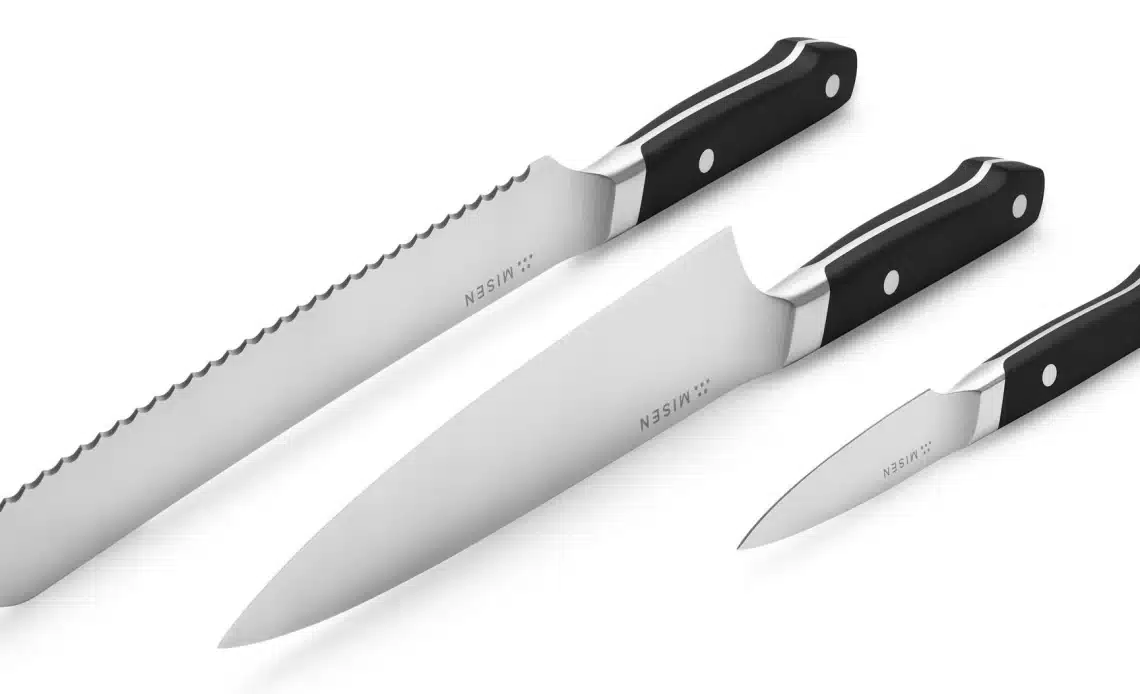A chef’s knife is an extension of their skill and creativity in the kitchen. As a culinary professional, having a deep understanding of the anatomy of professional knives is essential for achieving precision, efficiency, and safety in food preparation. Each knife component serves a specific purpose, allowing chefs to perform various cutting techniques with finesse.
This article will explore the anatomy of professional knives, from the blade to the handle, and delve into the importance of selecting the right kitchen knife.
Blade:
Professional knives typically have blades made from high-quality stainless steel or carbon steel. On the other hand, carbon steel blades offer excellent sharpness and edge retention but require more maintenance to prevent rust. The blade of a professional knife is composed of several key elements:
Edge: The blade’s edge is the sharp, cutting portion that comes into contact with the food. It should be honed and sharpened regularly to maintain optimal cutting performance.
Spine: The spine is the top, non-cutting edge of the blade. It provides stability and strength to the knife.
Tip: The blade’s tip is the forward, pointed end. It is used for precise tasks, such as peeling or intricate cuts.
Handle:
The handle of a professional knife is crucial for comfort, grip, and control. It should be ergonomically designed for the chef’s hand and provide a secure hold, even during extended periods of use. The handle materials, including wood and synthetic materials, can vary. Key features of a knife handle include
Rivets: Rivets are the metal fasteners that secure the tang to the handle. They should be durable and properly installed to ensure the knife’s longevity.
Bolster: The bolster is a thickened area where the blade meets the handle. It adds balance and stability to the knife and serves as a finger guard to protect against accidental slippage.
Balance and Weight:
The balance and weight of a professional kitchen knife significantly impact its usability. The ideal balance point should be near the bolster, allowing for precise control and effortless maneuverability. Additionally, the weight of the knife should be comfortable for the chef, striking a balance between being substantial enough for stability and light enough for agility.
Choosing the Right Knife for the Task:
Different knives are designed for specific tasks in the kitchen. Understanding the purpose of each knife and selecting the right knife is essential for efficiency and precision. Some common types of professional knives include:
Chef’s Knife: A versatile, all-purpose knife with a broad blade and a slight curve. It is ideal for chopping, slicing, and dicing.
Paring Knife: A small knife with a narrow, pointed blade. It is used for precise tasks such as peeling, trimming, and intricate cuts.
Santoku Knife: A Japanese-style knife with a shorter, wider blade and a flat cutting edge. It is suitable for slicing, dicing, and mincing.
Serrated Knife: A knife with a serrated edge, perfect for slicing through bread, tomatoes, and other foods with tough exteriors.
Cleaver: A heavy, rectangular knife with a thick blade. It is primarily used for cutting through bones and tough meat.
Mastering the art of culinary precision requires a deep understanding of the anatomy of professional knives. Each component, from the blade to the handle, plays a vital role in achieving efficiency, control, and safety in the kitchen. By selecting the right knife for each task and maintaining its sharpness and functionality, chefs can elevate their culinary skills and create culinary masterpieces with finesse and precision.







